- Author Adrian Jeff [email protected].
- Public 2023-12-17 05:06.
- Last modified 2025-06-01 06:54.
Mother Teresa: The Angel Who Doubted God
Mother Teresa is called the most influential woman in the world, and her life is the greatest event of the 20th century. The achievements of the little fragile nun are truly amazing, and her personality is exceptional in significance for all of humanity.
Mother Teresa is called the most influential woman in the world, and her life is the greatest event of the 20th century. The achievements of the little fragile nun are truly amazing, and her personality is exceptional in significance for all of humanity.
Mother Teresa changed the world and deservedly received the Nobel Prize "For her work and help a suffering person."
She began her mission in the Indian slums, where in those days people died just on the streets, and unwanted babies were thrown right into the fetid garbage heaps. An unusual nun, who longed to live outside the walls of the monastery, undertook to change what it would seem impossible to change - the cruel system that existed in the country, human habits and terrible traditions …
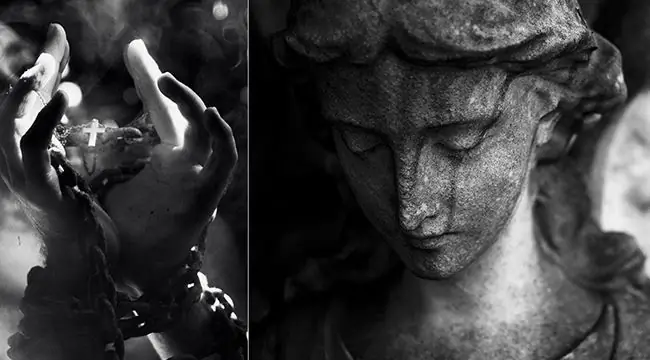
Mother Teresa was a unique person, because no one had ever done what she did before her - had not devoted his life to helping the poorest of the poorest.
Thousands of people in different countries followed Mother Teresa's example, starting to help the poor and disadvantaged. With her light hand, shelters, hospitals, and leper colony appeared around the world. The world has changed … There is more kindness and compassion in it.
A poor nun, whose property consisted of the cheapest sari, thin mattress, and a read-out Bible, founded a billion-dollar order. They believed her, huge sums of money were donated to her order. After all, she personally, like his other sisters, did not need anything.
Her name became known all over the world. All borders were open in front of her, she was expected in every corner of the planet. Journalists, politicians, the greatest and most famous people in the world were looking for meetings with her. A nun in a white sari was worshiped.
The close attention of journalists, the strength and power, the influence of the nun, her asceticism, the scale of the movement that she founded - all this was amazing.
However, many people still wonder: why, why did she need all this? After all, her diaries say that she was deeply unhappy. The nun, who constantly talked about God, doubted his existence in her soul. Why did she choose such a difficult and unusual life path for herself? Why did she give up the happiness of motherhood, the delights of earthly love, her own family? What a strange idea to become a bride of Jesus? Why did she do what she did?
So why?
Agnes Gonja Boyajiu
Events that take place in childhood undoubtedly influence the formation of a person and his fate. Mother Teresa's personality is no exception.
Agnes Gonja Boyajiu was born in 1910 to an Albanian family.
The family was not only wealthy, but also happy and really friendly. Boyagiu were devout Catholics.
Father Agnes was strict but loving. The head of the Boyagiu family was a successful entrepreneur, knew many languages and was very interested in politics. The family lost their breadwinner when Agnes was 9 years old.
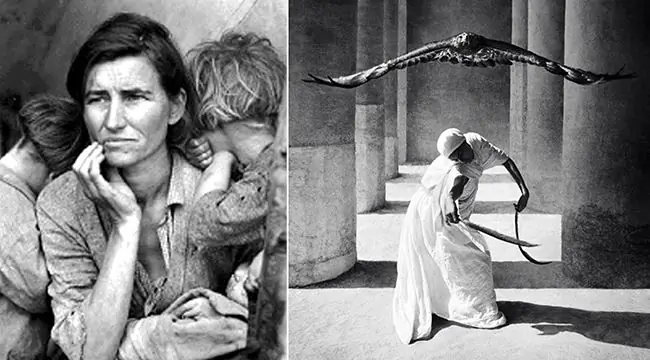
Agnes's mother, Dranafile, was an amazing woman. Her own example and the upbringing she gave greatly influenced the development, further fate and worldview of the girl.
Dranafile was a beauty, but the main thing is that she was a very kind and compassionate person. Poor wanderers always found shelter and food in her house. She helped those who needed help, even after she lost her husband, and at that time it was not easy for her herself. For example, Drana took care of a sick woman with many children, and after her death she took all her children to her house, where they lived as members of the Boyajiu family. Dranafile also looked after an alcoholic woman who lived next door, cleaned her house and brought food.
Agnes Gonja often helped her mother. The ability to compassion and the desire to help the unfortunate were formed in her before puberty under the influence of the correct upbringing of her mother.
Dranafile had a very developed visual vector. Helping others, she fully realized his properties. By instilling compassion in Agnes, she helped to fully develop her visual vector as well. Mother Teresa's boundless love for her neighbor, her amazing active ability to compassion and empathy, her humanistic ideas that have found many followers - all this is the result of the implementation of a developed visual vector to the highest level - “man”.
Mother Teresa talked a lot about love for one's neighbor. But she talked even more about God …
Looking for God
The idea to devote her life to God came to Agnes during puberty. She, like her mother, spent a lot of time in the temple. But she had a special relationship with God - she wanted God to be everything to her.

By the age of eighteen, Agnes Gonja made a firm decision to become a nun, "the bride of Christ," as Catholics say.
The renunciation of the joys and hardships of worldly life and the choice in favor of monasticism is the call of the sound vector of Agnes.
The sound child asks questions about God, the meaning of life and the universe at a fairly early age - 5-6 years old. Then, as they grow up and develop, sound questions in such a child may not be realized, in order to make themselves felt again after a while. Only for the sound engineer is the inner more important than the outer. Only he asks questions about the meaning of life. Only he is ready to completely renounce everything material, bodily, worldly, that which seems to him meaningless …
Agnes is the owner of the skin-sound-visual combination of vectors. She was born and raised in a Catholic family, so it is not surprising that she sought God in the Catholic faith. Monasticism meant for her an approach to God, union with him, service to him. That is, the filling of sound deficiencies in the cognition of the Creator and the secrets of the universe.
Agnes Gonja knew about the Bengali mission and decided to follow the example of the missionaries who helped the poor in India. This decision allowed her to combine two aspects that were important to her: the sound search for God, which she saw in monasticism, and visual compassion and a desire to help people who are in distress.
For many years in Calcutta, Mother Teresa was a teacher in a small girls' school at the monastery. I must say she was a wonderful teacher and an excellent educator. Children loved her for her kindness, tenderness and enthusiasm.
Mother Teresa, along with her pupils, visited the sick in hospitals and beggars in the slums, and then had serious conversations with the girls about what they saw. Perfectly matching the image of a skin-visual teacher in a state of "peace", she brought up the best qualities in her students, such as morality, morality, kindness, compassion.

But at the age of 36, Mother Teresa feels the need to live among the poor, to help them outside the walls of the monastery. This strange desire was received by the abbess and other sisters with great dislike and ridicule …
Life in the slums of Kolkata
No one has ever done what Mother Teresa intended. Catholicism has a rather rigid bureaucratic system in which new ideas are not welcomed. How did she come up with all this? A lonely beggar nun in a poor slum, in the epicenter of poverty, disease and helplessness - what could she change there without support and approval?
However, Mother Teresa knew how to convince and get her way. Two years later, at the age of 38, she received permission to live outside the walls of the monastery (on condition that she would follow her monastic vows).
The nun quickly completed medical courses and chose to live in the poorest area of the Calcutta slums - Moti Jil.
All she had was a bar of soap and a cheap white sari. She helped the poor to wash the children and wash their wounds, and on the second day she began to teach five children to write, drawing letters with a stick on the ground.
She found food for starving children, collecting alms from traders in the market or from home. Soon she found a suitable premises, where she organized a school for poor and street children. The nun taught them to read, write and serve themselves.

A year later, Mother Teresa had her first follower, and a year later there were already seven of them.
Order of mercy
The most important medicine is gentle love and care.
Mother Teresa
Soon, Mother Teresa received permission from the Vatican to create the Order of Mercy, the only Catholic order that arose in the 20th century. To the usual (skin-sound) monastic vows - poverty, fasting and chastity - Mother Teresa added one more (visual) one: to give all her strength to serve the poor, without demanding anything in return.
More and more sick, disadvantaged and hungry people turned to the sisters of the Order of Mercy. The order was replenished with sisters willing to devote their lives to helping the poorest of the poorest …
In 1952, Mother Teresa opened the first Home for the Dying in Calcutta (later such establishments became known as hospices). She and her assistants picked up unwanted people who died on the streets. The sisters looked after them, fed them, washed their wounds, trying to alleviate their suffering. “Loneliness and the feeling that no one needs you is the worst kind of poverty,” Mother Teresa said.
She was worried about another problem that existed in India - leprosy patients. Leprosy is traditionally considered God's punishment there, therefore absolutely everyone turns away from a sick person, regardless of his status, and he becomes a homeless outcast of society. There were about 500,000 such outcasts in Calcutta.
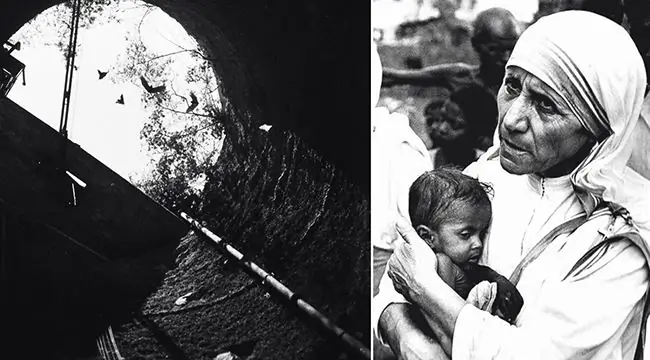
It was not possible to persuade the Indians to change their attitude towards those with leprosy, Mother Teresa. By that time, the Order of Mercy had become quite well-known, this allowed the nun to achieve the allocation of a plot of land to her, and, using the financial assistance of benefactors, she created a leper colony there called the "City of Peace". It was a settlement for lepers where they could live and work.
Mother Teresa and her sisters picked up homeless children and unwanted babies thrown into ditches and trash heaps. If his own mother refused the child, the baby found shelter in the Children's House, created by the Order of Mercy. For many of these children foster families were found, Mother Teresa worked in this direction too … Her incredible energy allowed her to do everything.
On the way of Mother Teresa, a huge number of obstacles and difficulties arose. Without any support from above, she solved all problems on her own, she always saw a way to continue her business, no matter what. For medicine and food for the poor, the creator of the Order of Mercy, together with her followers, collected alms and accepted donations from benefactors. She found accommodation for the sisters and for other purposes of the order. She was trusted, helped, donated for her cause. They did not believe her, criticized her, interfered with her. Her path was not smooth.
Mother Teresa was a developed and strong personality. Among other things, this fragile nun was an extremely effective leader. The correct upbringing that her parents gave her, who taught her self-discipline and organization (which served to develop her skin vector), allowed her to naturally organize the work of her sisters and easily manage them. They remember her: “If Mother Teresa told you:“Sit down,”you sat down” …
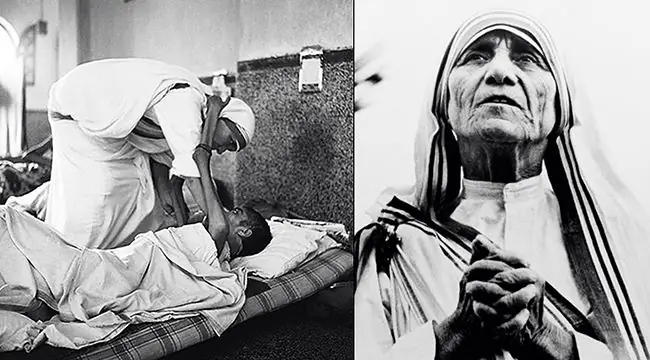
Mission and principles
Mother Teresa and all the sisters of mercy of her order led an extremely ascetic lifestyle. "Do not let the poverty of my order be disturbed," she said, refusing everything expensive and pompous. The shelters, hospitals and hospices she created were very modest and simple, equipped with only the necessary equipment. The Order of Mercy never spent money on secondary things, in any case Mother Teresa did not want that. The TV set in one of the hospitals, for example, is food taken away from the hungry. There are so many starving people in the world!..
… Wherever misfortune occurs in the world, Mother Teresa goes there. For example, she went to Beirut during the fighting. Taking advantage of the lull, she took the disabled children out of the destroyed orphanage. She has traveled all over the world, opening new shelters and hospitals in different countries.
Not all of the actions and principles of the world famous nun were understood and accepted by the public. Mother Teresa was criticized, for example, for taking donations from dishonest people. Sometimes she was demanded to return this money to those who suffered from the virtuous dealers. She always refused to return the money, referring to the fact that they were donated with a pure heart and not to her, but to the business she is engaged in.
Mother Teresa was an energetic, active, smiling person. She taught the sisters of mercy to smile at people, because a smile, she said, is at of love. Many considered her a saint during her lifetime. And hardly anyone knew what was hidden behind her smile, what was happening in her soul …
"Heaven is closed"
My smile is a big veil behind which lies a mass of pain. Sometimes the pain is so intense that I hear my own voice: "God help me."
Mother Teresa
Mother Teresa said that in every beggar, sick and unfortunate woman she sees Jesus. She did not just devote her life to serving the poorest of the poorest - in this way she tried to serve the Lord. She called it active love, and herself - the pencil of God.
Her entry into monasticism is an escape to God himself. Her pain and disbelief are nothing more than sound depression. She never found God, whom she so passionately sought, she did not feel him, did not feel love for him and doubted his existence.
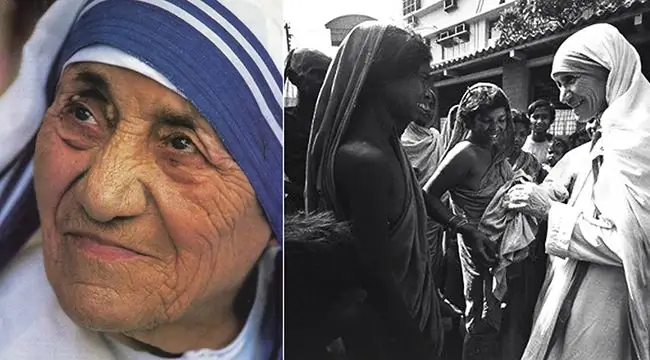
No prayer, no communion, no pilgrimage - nothing could ease this pain and strengthen the nun in her faith. “I have so many unanswered questions! I am afraid to ask them because it is blasphemy. If God exists, please forgive me,”she wrote in her diary. “Pray for me, father, because it’s more and more difficult for me to live with myself,” she asked her spiritual mentor.
Mother Teresa's compatriots, priests (who do not have a sound vector), attribute her crisis of faith to too high expectations from God. Did she really think that Christ would come in the flesh and appear before her? How can a saint doubt the existence of God? What was she waiting for, what did she want? Is it so hard to just believe and pray?..
Psychologists try to explain the mental suffering of Mother Teresa as a consequence of the events of her childhood, the loss of her father, for example. Some of them assumed that "she liked to suffer" …
At the training "System-Vector Psychology" by Yuri Burlan, an understanding comes of what and why happened to the most influential woman in the world.
The fact is that religion cannot fill the lack of a modern sound engineer, since they are much deeper than that of representatives of previous generations. Mother Teresa had a powerful temperament, and, accordingly, the power of desires and lack of a sound vector could not be satisfied with the Catholic faith.
The fact that Mother Teresa's sound vector was not in the best condition is indicated by the fact that she hardly slept. Also, Mother Teresa said that she hears voices ("inner voice", "voice of God"). Insomnia and “voices” are purely sound disorders.
Mother Teresa realized herself as much as she could, but sound shortages, like a bad tooth, did not allow her to enjoy life …
Mother Teresa, first of all, is the owner of the skin-sound vector ligament, which allowed her to bring to life the great idea that the world needed in the 20th century. While in search of God, she prompted hundreds of thousands of people with a visual vector to act, to fulfill their specific role - to compassion, help, care …
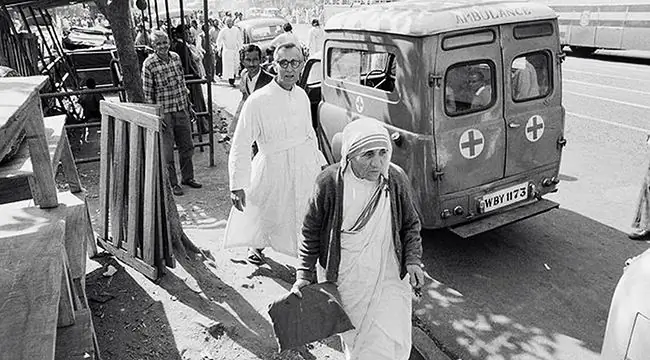
This amazing woman is no longer alive, but the business she started continues. The Order of Mercy operates in 133 countries of the world. 4,500 nuns in white saris help those who have no one else to help. Hundreds of thousands of volunteers around the world are involved in the work of the order. And Mother Teresa will forever remain a symbol of kindness, compassion and love for a person.
If you are interested in a deep analysis of the psychological qualities of a person using the example of famous personalities and the application of system knowledge in life for a better understanding of yourself and your loved ones, you can sign up for free online lectures on Systemic Vector Psychology by Yuri Burlan at the link: https://www.yburlan.ru / training /






